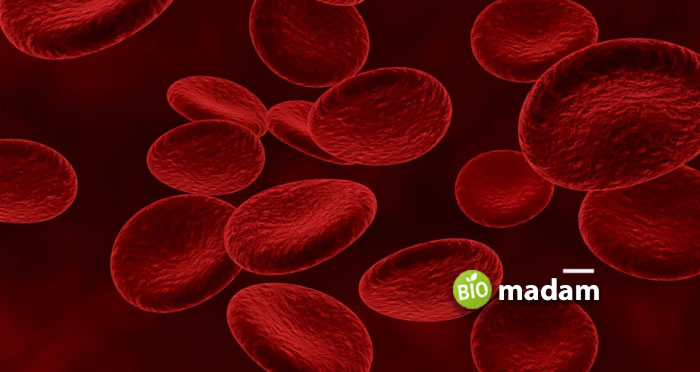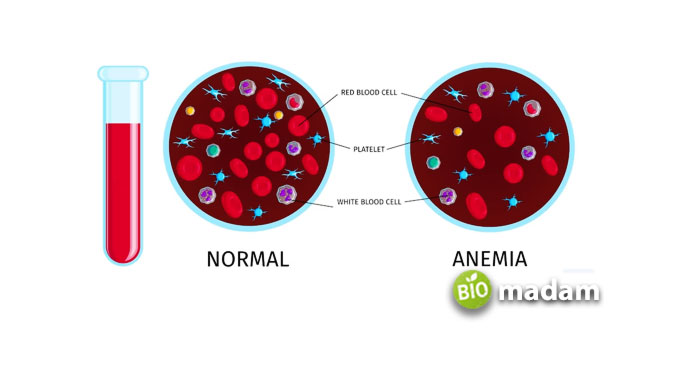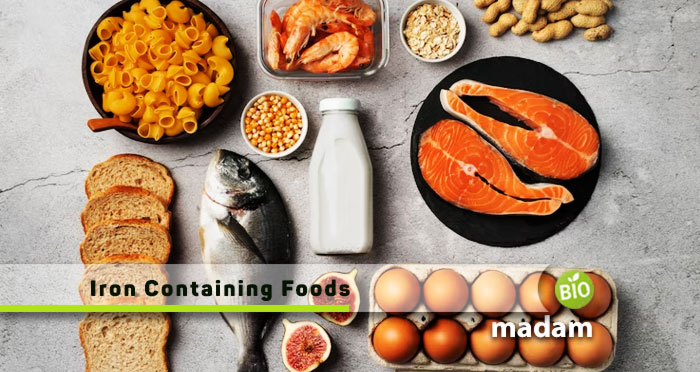Recently updated on December 14th, 2023 at 06:07 am
Vitamins and minerals are micronutrients essential for the normal functioning of the body. Iron is one of the most critical minerals contributing to life’s sustenance. It ensures that the organs receive oxygen to work properly. But don’t red blood cells supply oxygen to body tissues and organs? They do! Keep reading to learn how iron contributes to oxygen transport in the body.
What is Iron?
Iron is an element in the periodic table with the symbol Fe and belongs to heavy metals. It is a vital mineral in the body that contributes to oxygen transport through red blood cells.
You can obtain iron from food in heme and non-heme forms. Heme iron is present in animal sources like poultry, red meat, and seafood. On the other hand, non-heme iron comes from plant sources like nuts, whole grains, legumes, and leafy vegetables.
Functions of Iron
Iron in the body contributes to the synthesis of red blood cells and is the primary unit of these cells that transport oxygen.
Hemoglobin and Myoglobin Synthesis
Iron is involved in the production of hemoglobin and myoglobin. Both are types of proteins that contribute to the storage and transport of oxygen throughout the body. Hemoglobin is present in red blood cells and brings oxygen from both lungs to all body parts. At the same time, iron is also present in myoglobin, which stores oxygen in muscle tissues.

Hormone Production
The role of iron in hormone production has come to light and shows that it influences the production of hormones in different types of glands. Hepcidin is a hormone specifically influenced by the loading and absorption of iron in the blood.
Brain Development
Pregnant women are often prescribed iron supplements if they have low iron levels in their blood. Iron is essential to neonatal and fetal brain development. A low iron supply to the fetus may lead to an immature brain and myelination.
Boosts Immunity
Iron is critical to the immune system and helps you boost your immunity. Taking adequate amounts of iron plays a major role in the body’s ability to fight antigens and pathogens that may negatively affect your health.
Converts Blood Sugar to Energy
Iron influences the conversion of blood sugar to energy through the citric acid cycle and oxidative phosphorylation. It impacts enzymes involved in these processes, including mitochondrial aconitase, isocitric dehydrogenase, succinate dehydrogenase, and citrate synthase.
Improves Hair, Skin, and Nail Texture
Taking iron supplements can help you improve your skin, hair, and nails by boosting the synthesis of fibrous proteins like elastin and collagen. These proteins keep the nails moist and strong to prevent them from becoming brittle.
Recommended Daily Intake
The Recommended Daily Intake (RDI) or Recommended Dietary Allowance (RDA) for adults between 19 and 50 years is 8mg for men and 18mg for women. Adolescents between 14 to 18 years of age require 11mg of iron for boys and 15mg for girls. Pregnant women must take 27mg of iron daily because of their increased need. Lactating mothers are suggested to take 9mg. Due to menopause, the dietary iron requirement for women over 50 falls to 8mg. Thus, women should bring down the RDA to 8mg per day only after menopause. Children below 14 must not take iron more than 40mg in one day, while the amount is 45 mg for everyone 14+. Taking more than this iron in one day may lead to toxic effects.
| Life Stage | Recommended Amount |
| Birth to 6 months | 0.27 mg |
| Infants 7 – 12 months | 11 mg |
| Children 1 – 3 years | 7 mg |
| Children 4 – 8 years | 10 mg |
| Children 9 – 13 years | 8 mg |
| Teen boys 14 – 18 years | 11 mg |
| Teen girls 14 – 18 years | 15 mg |
| Adult men 19 – 50 years | 8 mg |
| Adult woman 19 – 50 years | 18 mg |
| Adults 51 years and older | 8 mg |
| Pregnant teens | 27 mg |
| Pregnant women | 27 mg |
| Breastfeeding teens | 10 mg |
| Breastfeeding women | 9 mg |
Iron Deficiency
Iron deficiency is common in children, menstruating women, and expecting mothers. You may also experience iron deficiency if you are not taking enough iron in your diet. Initial iron deficiency results from excessive bleeding or a low-iron diet. If the iron stores are not replenished in time, the number of red blood cells may drop. This stage refers to iron deficiency anemia. The physician runs blood tests to determine the deficiency and provides a suitable treatment regimen.

Pregnant and menstruating women are at a higher risk for iron deficiency as an expecting mother provides a high number of red blood cells to the fetus. Moreover, menstruating women with heavy bleeding and longer periods also experience iron deficiency anemia. Iron deficiency during pregnancy can cause low birth weight or premature birth. Thus, pregnant women must take 30 mg of iron daily, as recommended by CDC.
Other high-risk individuals for iron deficiency anemia groups include children, the elderly, vegetarians, and people suffering from kidney failure. Poor nutrition in children and the elderly is a common cause of anemia. Kidney failure patients on dialysis have reduced erythropoietin production leading to a decrease in red blood cells.
The signs and symptoms of iron deficiency anemia include lightheadedness, fatigue, rapid heartbeat, shortness of breath, pale skin, brittle nails, hair fall, and craving for dirt and ice (pica).
Replenishing Iron
Your physician may suggest oral iron supplements or IV iron if the levels are too low. However, mostly, the iron levels can be replenished through food sources. Increase the intake of red meat, poultry, seafood, beans, green leafy vegetables, beans, dry fruits, and cereals. Vegetarians must add more beans and lentils to their diet along with green leafy vegetables and nuts to get the right amount of iron for hemoglobin production.
The Bottom Line
Iron is a critical micronutrient in the body, contributing to the storage and transport of oxygen. It produces hemoglobin that forms the red blood cells to transport oxygen throughout the body. Besides its role in carrying oxygen, iron also boosts immunity and contributes to hormone production. Furthermore, it boosts immunity and leads to brain development in the fetus. Iron is also critical to improving hair, nail, and skin texture. Consult your physician to find out if you have low iron levels and replenish them through natural foods or supplements.
FAQs
What fruit is highest in iron?
If you do not like green vegetables or red meat, you can get your recommended daily iron from mulberries, prune juice, and mulberries. These fruits have a high iron content to replenish your iron loss at a mild stage.
Are eggs high in iron?
Eggs are high in iron, and you can try different egg recipes to enjoy them in unique ways. They also contain proteins and vitamins and thus act as jam-packed sources of nutrients. Click here to know how long can you freeze eggs.
How do I know if my iron is low?
Prolonged fatigue, confusion, pale skin, and shortness of breath are common symptoms of iron deficiency. Craving for dirt and ice also indicates low iron levels in the body. Besides, long-term iron deficiency can even lead to anxiety.
What vitamin is iron called?
Minerals and vitamins are micronutrients required by the body for biological and cellular functions with the body. Yet, iron is not a vitamin; instead, it is a mineral.
Are bananas high in iron?
Green (raw) bananas have a high amount of iron in them. Furthermore, cooked bananas have been seen to have an even higher iron content than raw bananas. Bonus: bananas are good for constipation as well.
Does iron whiten skin?
Iron does not improve your skin’s complexion but gives it a healthy glow. Lower amounts of hemoglobin in the body reduce oxygen flow, making your skin look pale. Taking an adequate amount of iron can help bring a glow to your face.
Do iron tablets make you darker?
Iron is critical to many body functions and primarily provides oxygen to your organs, including skin, which offers a pinkish glow. Nevertheless, an excessive amount of iron can trigger excess production of the pigment melanin responsible for your skin’s color. Thus, iron tables may make you darker if you do not monitor and control your iron intake.

Meet me; I am Paulina Zaniewska, who’s more hooked on providing the best health blog. I’ve always been so determined to compete as a nutritionist, and here I am, done with a Master’s in food technology. My brilliant performance throughout encouraged me to help people.

